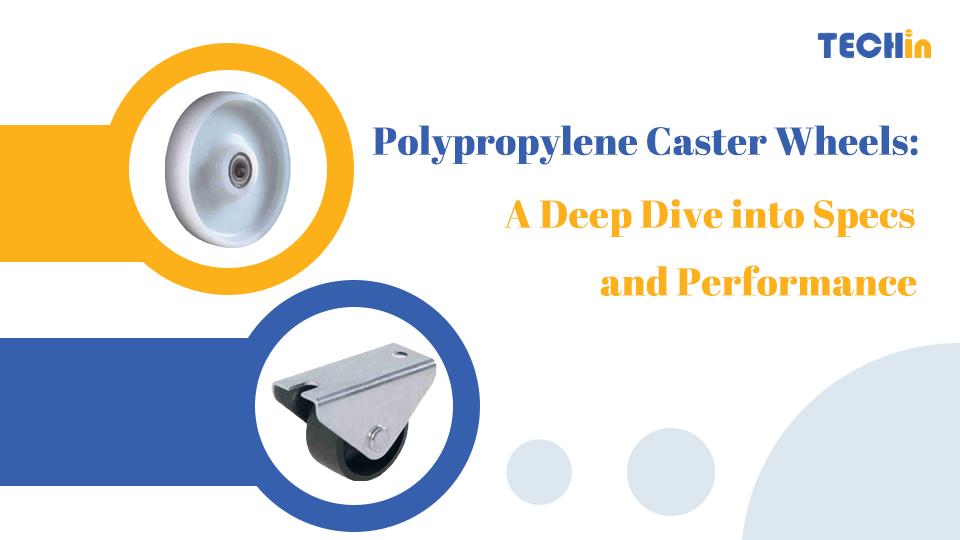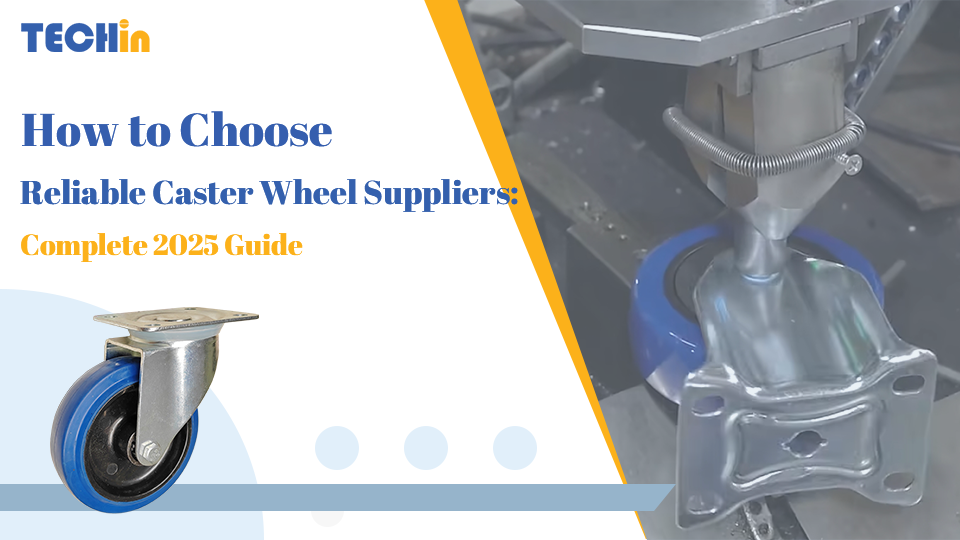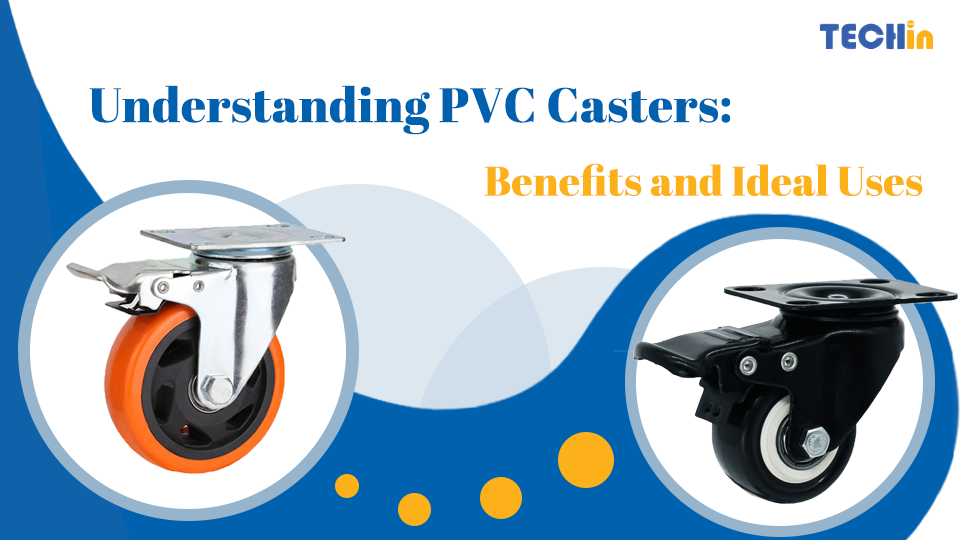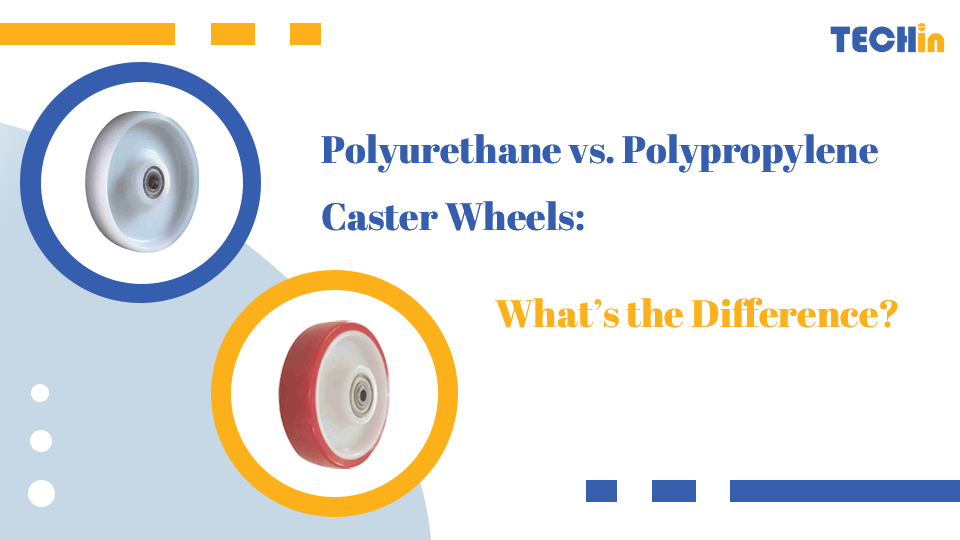Introduction
Polypropylene caster wheels are a lightweight yet durable solution for industries that need reliable mobility. From supermarkets to machinery projects, buyers often weigh their performance, advantages, and limitations. In this post, I’ll take you through their specs, benefits, uses, and how to choose the right one.
Polypropylene caster wheels are made from molded polypropylene, a tough plastic known for being lightweight, corrosion-resistant, and affordable. They are widely used for carts, racks, dollies, and machinery where cost-efficiency and durability matter. Their main advantages include resistance to water, chemicals, and wear, while their disadvantages include limited load capacity and reduced shock absorption compared to rubber or polyurethane wheels.
Now that you know what polypropylene casters are, let’s look deeper into their performance, advantages, disadvantages, and where they’re best applied.
What Are Polypropylene Caster Wheels?
Polypropylene caster wheels are made from injection-molded polypropylene, a rigid thermoplastic that offers excellent chemical resistance and stability. They are often compared with polyolefin wheels, which are similar in design but sometimes reinforced with glass for added strength.
These wheels are a cost-effective choice, particularly for industries that don’t require heavy-duty shock absorption but need durability against moisture, chemicals, and everyday wear.
Advantages of Polypropylene Caster Wheels
Polypropylene casters are popular because they combine affordability with reliable performance.
- Lightweight & Economical: Perfect for projects where cost matters without sacrificing mobility.
- Chemical & Corrosion Resistance: Unlike metal or rubber wheels, polypropylene won’t degrade when exposed to cleaning solutions, oils, or mild acids.
- Durability: They withstand years of use in controlled indoor environments, such as retail, laundry, or light manufacturing.
Disadvantages of Polypropylene Caster Wheels
Of course, no wheel material is perfect. Polypropylene has some limitations you should consider:
- Lower Shock Absorption: Unlike rubber or pneumatic wheels, polypropylene does not cushion vibrations well.
- Noise Concerns: Hard plastic tends to be louder on certain floor types.
- Not Ideal for Heavy-Duty Loads: For very high-capacity applications, polyurethane or steel wheels may be a better option.
Common Uses of Polypropylene Caster Wheels
You’ll find polypropylene wheels across many industries thanks to their practicality.
- Furniture Dollies: Lightweight but strong enough to move furniture.
- Laundry Carts & Bakery Racks: Ideal in environments with moisture and cleaning chemicals.
- Supermarket & Retail Trolleys: Provide economical mobility in high-use areas.
- Machinery Projects: Suitable for medium-duty equipment that requires mobility without overloading.
Is Polypropylene Good for Wheels?
Yes, polypropylene is a great choice for many applications. They are renowned for their wear resistance and ability to handle moderate loads. While they may not outperform polyurethane in heavy industry, they strike the right balance between performance and cost, making them a top choice for many procurement managers.
Which Is Better: Rubber or Polypropylene Casters?
It depends on the environment and use case.
- Rubber Casters: Quieter, floor-protective, and excellent for shock absorption. Perfect for hospitals, schools, and offices.
- Polypropylene Casters: More durable against chemicals and moisture, and usually more affordable. Ideal for supermarkets, workshops, and manufacturing.
👉 If noise control and floor care are priorities, go with rubber. If durability and cost-efficiency are more important, polypropylene is the better choice.
What Floor Surfaces Are Best for Polypropylene Wheels?
Polypropylene wheels work best on:
- Smooth concrete floors
- Tile and epoxy-coated floors
- Indoor surfaces where moisture or chemicals are present
They are not ideal for:
- Rough outdoor terrain
- Carpets or soft flooring
- Uneven factory floors
For those conditions, pneumatic wheels or polyurethane wheels may perform better.
How to Select the Right Polypropylene Caster for Your Application
Choosing the right caster is crucial for safety and performance. Consider these factors:
- Load Capacity: Calculate the total load and divide by the number of casters. Always add a safety margin.
- Wheel Size: Larger wheels roll more smoothly and handle obstacles better.
- Bearing Type: Roller or ball bearings provide smoother operation.
- Environment: If the application involves chemicals, water, or high temperatures, polypropylene excels.
For applications requiring frequent heavy loads, you may want to compare with polyolefin casters vs polyurethane to ensure maximum reliability.
Maintenance Tips for Polypropylene Caster Wheel
Maintaining these wheels is simple but important for longevity.
- Regular Cleaning: Remove debris and buildup to prevent rolling resistance.
- Inspect Bearings: Ensure they are lubricated and not worn.
- Check Mountings: Tighten any loose bolts or plates to avoid accidents.
- Timely Replacement: Swap wheels that develop cracks, flat spots, or uneven wear.
Following these practices ensures your polypropylene wheels stay reliable for years.
Summary
Polypropylene caster wheels strike a balance between cost and durability, making them ideal for light-to-medium duty applications. Whether you’re sourcing for a project or everyday use, knowing their strengths and limits ensures better selection. What type of caster do you currently use in your projects?










